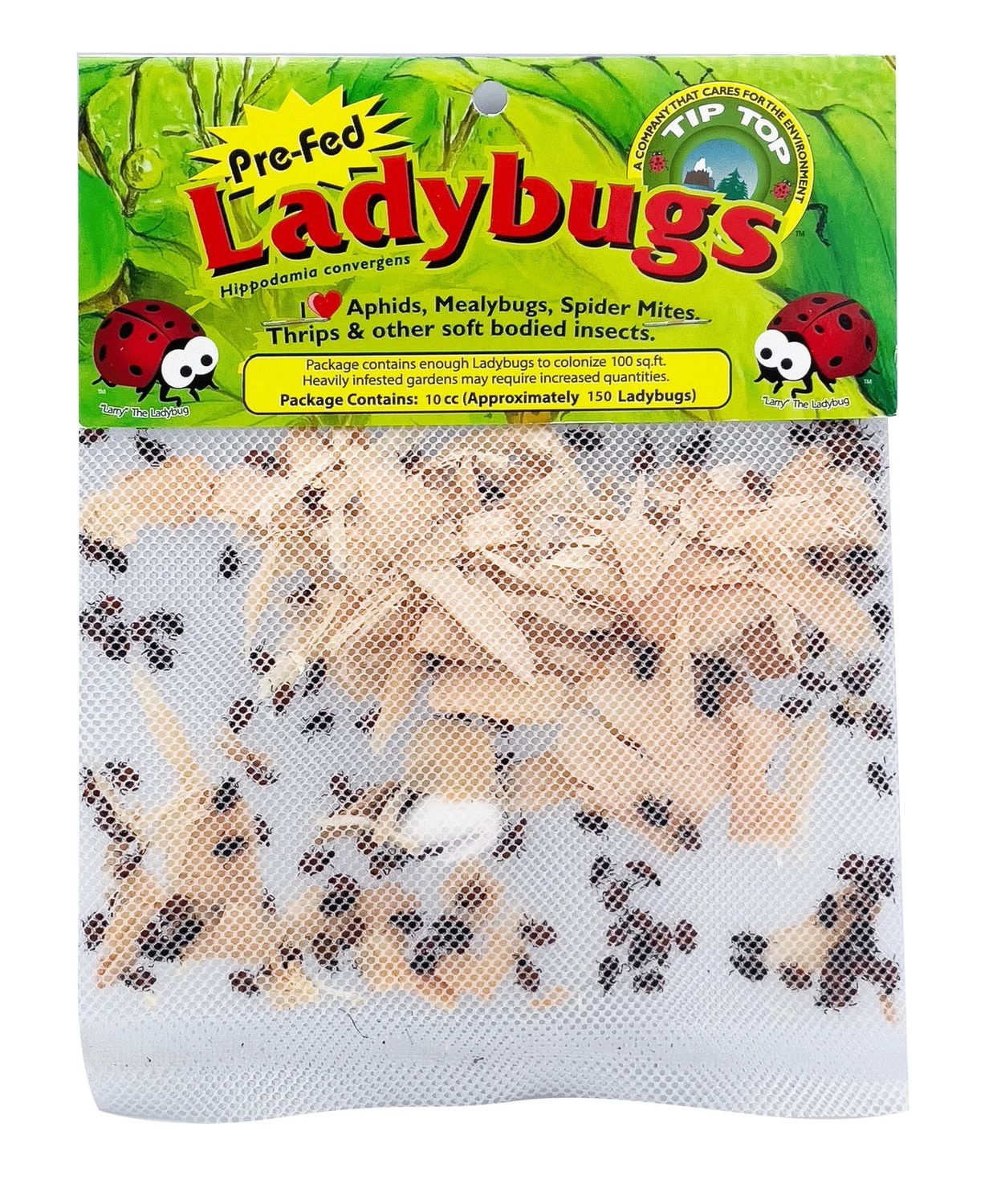Ladybug 750-count
Ladybug 750-count
Seasonal Availability:
Available May through September
Targets Pests:
Aphids, also moth eggs, mites, scales, thrips, leafhoppers, mealybugs and other slow-moving insects.
Description:
Ladybugs are general predators that feed on a variety of slow-moving insects, but they are best known for feeding on aphids. During the adult and larval stages it is a predator. Adults are shiny, hemispherical beetles, often reddish-orange or yellow, with black markings. Larvae are black, with conspicuous legs and orange spots on their backs. They move from plant to plant on leaves. Larvae pupate on the upper leaf surfaces, plant stems and twigs. Eggs are yellowish-orange ovals, laid on end in clusters of 10 to 50.
Product information:
Convergent ladybird beetles (Hippodamia convergens) are shipped as adults in containers and cloth bags. Storing the beetles can be done at a temperature of 40°F to 60°F for 1 - 3 weeks. Ideally ladybugs should be released in the evening or very early morning when it is cool or overcast so they move more slowly. To improve performance, mist foliage beforehand. Ladybug beetles can begin reproducing immediately with ample food and moisture. Several generations may occur during one season.
Lifespan:
- From egg to adult takes 3 - 4 weeks in summer, 6 weeks in spring.
- When released, adult ladybugs should mate and lay eggs within 8-10 days.
- The eggs will hatch into larvae in 5 days.
- Temperature and food availability will determine the timing of each stage and reproductivity.
- One female can lay up to 1,500 eggs over their 100 - day lifetime.
- One larvae can eat about 400 aphids until it pupates.
- One adult may eat over 5,000 aphids.
Strategic Considerations:
Pesticides and even wetting agents and spreader-stickers may adversely affect ladybugs survival. Broad spectrum and systemic insecticides are toxic to ladybugs.
